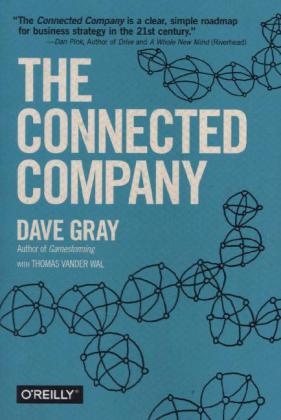Read more
The future of work is already here.
Customers are adopting disruptive technologies faster than your company can adapt. When your customers are delighted, they can amplify your message in ways that were never before possible. But when your company's performance runs short of what you've promised, customers can seize control of your brand message, spreading their disappointment and frustration faster than you can keep up.
To keep pace with today's connected customers, your company must become a connected company. That means deeply engaging with workers, partners, and customers, changing how work is done, how you measure success, and how performance is rewarded. It requires a new way of thinking about your company: less like a machine to be controlled, and more like a complex, dynamic system that can learn and adapt over time.
Connected companies have the advantage, because they learn and move faster than their competitors. While others work in isolation, they link into rich networks of possibility and expand their influence.
Connected companies around the world are aggressively acquiring customers and disrupting the competition. In The Connected Company, we examine what they're doing, how they're doing it, and why it works. And we show you how your company can use the same principles to adapt - and thrive - in today's ever-changing global marketplace.
List of contents
Praise for The Connected Company
Introduction
Acknowledgments
Foreword
Part One: Why change?
Chapter 1: The connected customer
Chapter 2: The service economy
Chapter 3: Everything is a service
Chapter 4: Services are complex
Chapter 5: How companies lose touch
Chapter 6: Structural change is necessary
Chapter 7: Complexity changes the game
Part Two: What is a connected company?
Chapter 8: Connected companies learn
Chapter 9: Connected companies have a purpose
Chapter 10: Connected companies get customer feedback
Chapter 11: Connected companies experiment
Part Three: How does a connected company work?
Chapter 12: Wrangling complexity
Chapter 13: The future is podular
Chapter 14: Pods have control of their own fate
Chapter 15: Pods need platforms
Chapter 16: How connected companies learn
Chapter 17: Power and control in networks
Part Four: How do you lead a connected company?
Chapter 18: Strategy as a Pool of Experiments
Chapter 19: Leading the connected company
Chapter 20: Managing the connected company
Part Five: How do you get there from here?
Chapter 21: The Risks of Connectedness
Chapter 22: Starting the journey
Bibliography
Discussion Questions
About the author
Dave Gray is the Founder and Chairman of XPLANE, the visual thinking company. Founded in 1993, XPLANE has grown to be the world's leading consulting and design firm focused on information-driven communications. Dave's time is spent researching and writing on visual business, as well as speaking, coaching and delivering workshops to educators, corporate clients and the public.He is also a founding member of VizThink, an international community of Visual Thinkers.
Summary
To keep pace with today's connected customers, your company must become a connected company. That means deeply engaging with workers, partners, and customers, changing how work is done, how you measure success, and how performance is rewarded.

